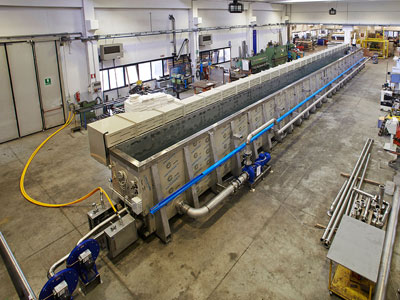Design and engineering of galvanic plants
Metalworking in all its aspects: the design and engineering of galvanic plants
 A galvanic treatment is a metalworking process which makes other materials more corrosion resistant and aesthetically more pleasing to the eye. It is a very delicate operation, which also involves significant environmental risks; for this reason, design and engineering of galvanic plants must be designed by extremely competent companies that take all of the necessary precautions.
A galvanic treatment is a metalworking process which makes other materials more corrosion resistant and aesthetically more pleasing to the eye. It is a very delicate operation, which also involves significant environmental risks; for this reason, design and engineering of galvanic plants must be designed by extremely competent companies that take all of the necessary precautions.
SEE ALSO: Decorative precious metals plating lines
Various metals are used in this sector: mainly chrome and nickel, but also zinc, zinc alloys, copper and copper alloys, as well as more precious metals such as bronze, gold and silver.
There are various types of galvanizing plants, which vary depending on the intended use of the product: manual systems that are suitable for medium-low work-loads, which combine simplicity and functionality; in-line, spin or hanging frame systems, which have the great advantage of being extremely versatile and highly productive, especially for decorative surface treatments, due to their compactness, durability and safety; there are automatic drying machines, which can be used following galvanic treatments on finished products with clean and well-finished surfaces; then there are davit arm systems, with a hanging frame structure, particularly suitable for small spaces and therefore mainly in the sector for bathroom fixtures and taps.
The design and engineering of galvanic plants is beneficial to several types of applications, such as pickling, traditional cleaning, electropolishing, electrodeposition or cleaning without solvents, depending on the company that uses it; there are many sectors in which the design and engineering of galvanic plants is crucial, from the engineering and military sectors, to those related to daily life, such as fashion or windows and doors.

